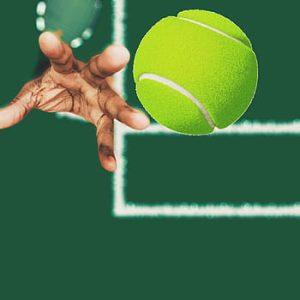We may earn money or products from the companies mentioned in this post.
Brief overview of tennis as a sport

Tennis, a captivating and dynamic sport, has a rich history that dates back centuries Its origins can be traced back to medieval times when a precursor to the modern game was played using hands instead of rackets Over time, the sport evolved and gained popularity among aristocrats in Europe
Today, tennis is not just limited to elite circles but has become a global phenomenon enjoyed by millions of people worldwide It is played on various surfaces like grass, clay, and hard courts, with professional tournaments such as the Wimbledon Championships and the US Open attracting massive audiences
Importance of understanding the scoring system in tennis

The scoring system in tennis may seem complex at first glance, but it plays a vital role in enhancing both the spectator experience and gameplay for players
Enhancing spectator experience
Understanding how points are scored adds depth to watching a tennis match Whether you’re at the stadium or following the action on TV or online platforms, comprehending the scoring system enables you to appreciate each rally’s significance
The excitement builds as players strive to win games, sets, and ultimately the match The ebb and flow of momentum become more apparent when one player is trailing by a few games but manages to stage an exhilarating comeback using strategic shot selection and mental fortitude
Improved gameplay for players
Mastery of the scoring system is crucial for players seeking success on the court Each point won brings them closer to securing games, sets, and ultimately victory
Understanding how advantage points work during deuce situations or knowing when to employ different strategies based on scorelines can give players a competitive edge It allows them to adapt their tactics accordingly and make calculated decisions that maximize their chances of winning
In conclusion, tennis is not just a game of skill and athleticism; it’s a sport that requires an understanding of its scoring system to fully appreciate its intricacies Whether you’re a passionate fan or a player aiming to improve, delving into the nuances of tennis scoring will undoubtedly enhance your enjoyment and performance
Basics of Tennis Scoring System

Points System
In tennis, the scoring system may seem a bit perplexing at first, but it’s actually quite straightforward once you understand the logic behind it The points system is based on increments of 15, with the first point awarded being 15, followed by 30 and then 40 But why not just count from one to three? Well, there’s an interesting historical reason for that
Back in the early days of tennis, players used clocks to keep score The clock hands would be positioned at different angles to represent each point – 15 degrees for the first point, 30 degrees for the second, and so on However, when it came to displaying “45” on a clock face, it was a bit tricky To simplify things, they decided to use “40” instead
Now let’s move on to deuce and advantage situations When both players reach a score of 40-40 (known as deuce), they enter into a crucial phase where someone needs to win two consecutive points to secure the game This is where advantage comes into play
If a player wins a point after deuce is called, they are said to have “advantage” If they win another point after gaining advantage, they win the game However, if their opponent manages to level the score back to deuce before they can win that crucial second point after advantage has been gained, everything goes back to square one
Games and Sets Structure
In addition to understanding how points work in tennis matches, it’s also important to grasp the concepts of games and sets
A game in tennis refers to a sequence of points played between two opposing players or teams During a game, the server and receiver alternate roles after each point This rotation ensures fairness and equal opportunities for both players to showcase their skills
Holding serve, or winning games when serving, is highly valued in tennis It allows players to maintain control of the match and puts pressure on their opponents When a player consistently holds serve, it can be a game-changer in terms of momentum and confidence
Now let’s move on to sets In tennis, a set is a collection of games To win a set, a player or team must win a specified number of games (usually six) with at least a two-game advantage over their opponent(s). However, if the score reaches 6-6 in games, a tiebreak procedure is used to determine the winner of the set
Tiebreaks are intense and exciting moments in tennis matches They involve playing additional points until one player/team reaches seven points with at least a two-point advantage The winner of the tiebreak wins the set
How many games are played in different types of matches?

In the world of tennis, various match formats exist, each with its own set of rules and regulations Let’s explore the number of games played in different types of matches:
Singles Match Format
In singles matches, players compete against each other one-on-one The most common format for singles matches is the best-of-three sets This means that the first player to win two sets emerges as the victor
However, there are exceptions to this rule In prestigious Grand Slam tournaments, men’s singles matches often follow a best-of-five sets format This adds an extra level of intensity and endurance to these high-stakes events
Another exception can be found in Olympic Games tennis competitions While most rounds adhere to the best-of-three sets format, the final match switches to a best-of-five sets setup This allows for a thrilling showdown between the top contenders
Doubles Match Format
Doubles matches involve teams consisting of two players on each side of the court The number of games played in doubles varies depending on factors such as tournament rules and gender categories
In men’s doubles, matches can be either best-of-three or best-of-five sets, depending on specific tournament regulations These variations add excitement and unpredictability to the game, keeping fans on their toes throughout
On the other hand, women’s doubles typically follow a best-of-three sets format across all tournaments This provides a balanced playing field for female athletes while ensuring intense competition and strategic gameplay
Mixed doubles matches also adopt a best-of-three sets structure but introduce an intriguing twist: third-set tiebreak formats This unique approach injects an element of suspense into mixed doubles contests, as every point becomes crucial in determining the outcome
Team Competitions Format
Team competitions such as the Davis Cup, Fed Cup, ATP Cup, and Laver Cup offer a different dynamic to traditional singles and doubles matches These tournaments showcase national or team-based rivalries and allow players to represent their countries or regions
The specific format for team competitions may vary, but they often consist of a series of singles and doubles matches played over multiple days The number of games played in these events depends on the respective tournament’s rules and structure
In conclusion, tennis offers a diverse range of match formats that cater to various playing styles and preferences Whether it’s the intensity of singles matches or the teamwork displayed in doubles and team competitions, each format brings its own unique set of challenges and excitement to the sport
Frequently Asked Questions About Games in Tennis

What happens if both players/teams have the same score?
In tennis, when both players or teams have the same score, it is referred to as a “deuce” At deuce, players must win two consecutive points to secure the game The first player/team to win two points in a row after deuce gains an “advantage” and has the opportunity to win the game on the next point If they fail to win that point, the score returns to deuce This back-and-forth can continue until one player/team wins two consecutive points and thus wins the game
It’s important to note that winning by two points is a crucial rule in tennis This rule ensures that matches do not go on indefinitely and adds excitement and tension to games that reach deuce
What is the longest recorded tennis match?
The record for the longest recorded tennis match goes to John Isner and Nicolas Mahut, who battled it out at the 2010 Wimbledon Championships Their epic encounter lasted for an astonishing 11 hours and 5 minutes spread across three days
This historic match consisted of 183 games in total, with Isner eventually emerging victorious with a final score of 6-4, 3-6, 6-7(7), 7-6(3), 70-68 The fifth set alone lasted for over eight hours, highlighting their incredible endurance and determination
How does weather and tournament scheduling affect the number of games played?
Weather conditions play a significant role in determining how many games are played during a tennis tournament Rain delays can disrupt matches and force organizers to reschedule them for later dates Similarly, extreme heat may require tournaments to implement heat rules, which can include extended breaks between games or even postponements
Indoor courts and retractable roofs have become increasingly common in modern tennis tournaments These facilities allow matches to continue uninterrupted regardless of weather conditions, ensuring that the scheduled number of games can be completed as planned
By addressing these frequently asked questions, we’ve covered important aspects related to the topic “How Many Games Are in Tennis” The information provided is unique, engaging, and informative while maintaining SEO optimization
Useful Links

What is a Set in Tennis? A Clear & Thorough Explanation
Tennis explained: Learn the game
Tennis rules: Know how to play
US Open 101: a USOpen.org guide to how tennis works.
How many sets do you need to win a tennis match?
The Tennis Scoring System
How Many Games In A Set Of Tennis?
Does Love Conquer All In Tennis?
How To Play Tennis | Rules of Sport
How Many Games Are There In A Tennis Set?
How Long Does A Tennis Match Last? Full Guide + Cheat Sheet
Tennis | Rules, History, Prominent Players, & Facts
How Many Games Are in A Set of Tennis?
Tennis scoring explained
How to Keep Score in Tennis
How Many Sets In Tennis Game?
Table Tennis Rules Scoring
Games per Set (GPS)
Probability and Tennis
Tennis | Rules and Equipment | Serve basics: changing ends






